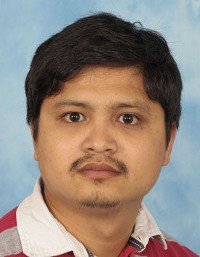Closing the yield gaps: How sustainable can we be?
Introduction
Globally, food consumption patterns are changing towards affluent diets. Food production usually requires inputs and induces environmental stress. Presently, about a billion people, mostly from developing countries, are living under malnutrition and hunger. However, crop production could be increased by more than 50% by closing the yield gaps. Due to dietary changes and an expected global population of around 9 billion, food production needs to be almost doubled by 2050. This would certainly require more external inputs and also exacerbates environmental stress, raising an important sustainability question: how to achieve food self-sufficiency (FSS) on the global, regional, and local scale while addressing the need to minimize agriculturally induced environmental stresses?
Methodology
We divided our investigation into two parts. First, we identified regions where achievement of potential crop calorie production would meet present and/or future FSS. We defined crop calorie production gap as a ratio between potential and observed crop calorie production, and a region as having a crop calorie deficit if its total crop calorie consumption is greater than its total crop calorie production. The second part of the study comprised identification of the management packages needed to achieve potential crop calorie production. We used data from Global Agro-ecological Zones (GAEZ) model to identify management and input options that would overcome the biophysical and socioeconomic factors causing the gaps between traditional low input farming yields and advanced farm management high input yields. We defined eight clusters of countries based on their achieved potential crop calories, management, and input levels in circa 2000.
Results
Most of the countries were able to obtain FSS or at least upgrade FSS status when achieving potential crop calorie production levels for present and future food consumption levels. However, closing the yield gap might not be enough to achieve FSS in many of the countries in sub-Saharan Africa by 2050 because of population increases and changes in dietary patterns. Closing the yield gap requires a multiple of management and input options in addition to fertilizer application, for example, pest, climatic risk, soil and market management that varies across regions. Results show for example that sub-Saharan African countries require a complex package of soil and market management improvements to increase their yield, whereas regions in India require mostly improved soil management and Russia requires climatic risk management. Moreover, soil management in sub-Saharan Africa mainly consists of improving the nutrition retention capacity of the soil, while in India soil management mainly comprises improving the workability of soil via mechanization. A map of management packages, as required in different part of the world to achieve the high input potential yields, was drawn up as part of the project.
Conclusions
The magnitude of environmental stress depends largely on ways management packages are implemented to close the yield gap. Therefore, synergies need to be explored between closing the yield gap to enhance FSS and minimizing agriculturally induced environmental stresses.
Note
Prajal Pradhan, Potsdam Institute for Climate Impact Research, Potsdam, Germany, is a citizen of Nepal and a resident of Germany. He was funded by IIASA's German National Member Organization and worked in the Water (WAT) Program during YSSP.
Please note these Proceedings have received limited or no review from supervisors and IIASA program directors, and the views and results expressed therein do not necessarily represent IIASA, its National Member Organizations, or other organizations supporting the work.


